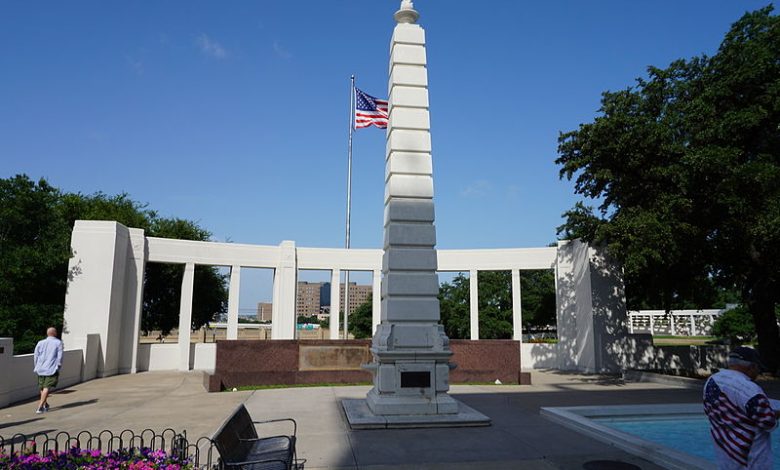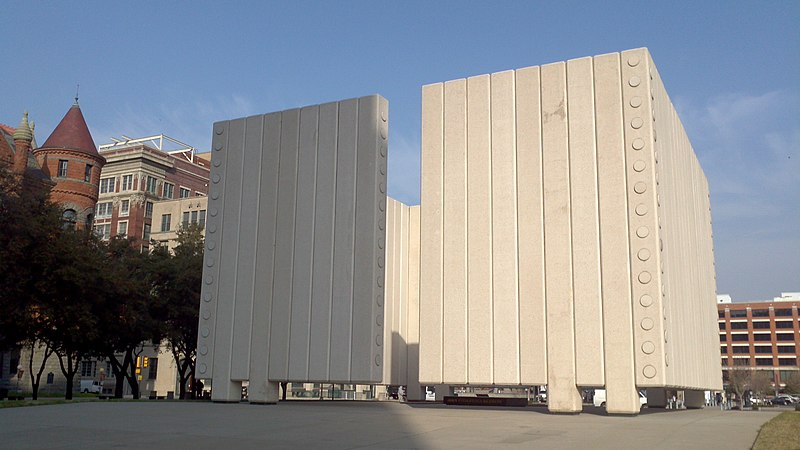The John Fitzgerald Kennedy Memorial is a monument that is dedicated to United States President John Fitzgerald Kennedy. It is located in the West End District of downtown Dallas, and it opened in 1970. Since it was erected, it became an essential part of Dallas’ urban landscape and its cultural heritage. Well-known architect Philip Johnson designed the memorial, and he said that he designed it to be a thoughtful piece of art intended for remembrance and reflection. In this article, we are going to know more about the John F. Kennedy Memorial Plaza.
History
Dallas County Judge Lew Sterrett is the first to suggest that a monument should be built in memory of John F. Kennedy, two days after his assassination. The plan became a formal proposal in December 1963, and Sterrett formed John F. Kennedy Citizens Memorial Committee that consisted of Mayor Earle Cabell and other prominent Dallas citizens. However, other Dallas citizens and former mayor R.L Thornton expressed that the memorial should be placed in Washington D.C so that Dallas will be distanced from the infamy that it got as the president’s assassination site. Eventually, they agreed that the memorial would be placed in Dallas, and the Committee started to solicit designs for a monument. They received about 206 design proposals within a week, and it reached up to 700 proposals by February 1964.
That same month, the Committee announced that they have already narrowed down the proposals to three finalists. They also said that they had plans to create two memorials: one near the assassination site and one at the John F. Kennedy Library in Boston. In Dallas, they chose the location near the Old Red Courthouse, and by September 1964, the concept for the Kennedy Plaza was made, and it included a green space with a modest marker.
Stanley Marcus, a John F. Kennedy Memorial Committee member, flew to New York to personally asked Philip Johnson to design the memorial. Johnson eventually agreed and said that he would do it for free. Philip Johnson showed his proposal model to the Committee in December 1964. That same month, the Committee released the memorial’s final design, hoping that the existing buildings at the site will be demolished to have the memorial ready by November 1968, which is the fifth anniversary of the assassination. The construction did not start until 1969, and the Committee said that the monument was being constructed for a reasonable fee. They also stated that it would be finished and dedicated by January 1970. In June 1970, the memorial was finally dedicated, and 300 people attended the ceremony. In 1972, Sargent Shriver became the first Kennedy family member ever to visit the memorial.
Design
The John F. Kennedy Memorial was the first memorial designed by Philip Johnson, and Jacqueline Kennedy approved it. Johnson described his work as a quiet refuge with an enclosed space where you can think and contemplate.
The plaza lies in the block bounded by Record, Main, Commerce, and Market Streets. The plaza is located about 200 yards east of Dealey Plaza, where John F. Kennedy was assassinated. You will see a cenotaph or an empty tomb in the plaza, which represents the freedom of Kennedy’s spirit. The memorial has a square and roofless room 30 feet tall and 50 by 50 feet wide with two narrow openings on the north and south. The wall has 72 white precast concrete columns that are placed 29 inches above the earth.
The cenotaph also has eight columns, which acts as the legs that support the monument. There are two columns in each corner, and it ends in a light fixture. At night, the light makes it look like the monument is supported by light.
The cenotaph is situated atop a low concrete hill, and it has embossed squares that are slightly elevated. Inside of the memorial, you will get to see a low block of dark granite with the name John Fitzgerald Kennedy written on its north and south faces. The letters are painted gold so that they will capture the light from the white floating column walls.
Besides the cenotaph, you will also see two dark granite squares in the plaza that surround the memorial. Both of these granite squares are inscribed with an epitaph that reads:
“The joy and excitement of
John Fitzgerald Kennedy’s life belonged to all men.
So did the pain and sorrow of his death.
When he died on November 22, 1963, shock and
agony touched human conscience throughout the world.
In Dallas, Texas, there was a special sorrow.
The young President died in Dallas. The death
bullets were fired 200 yards west of this site.
This memorial, designed by Philip Johnson,
was erected by the people of Dallas. Thousands of
citizens contributed support, money and effort.
It is not a memorial to the pain and sorrow
of death, but stands as a permanent tribute to the joy
and excitement of one man’s life.
John Fitzgerald Kennedy’s life.”
— Jim Lehrer, journalist



